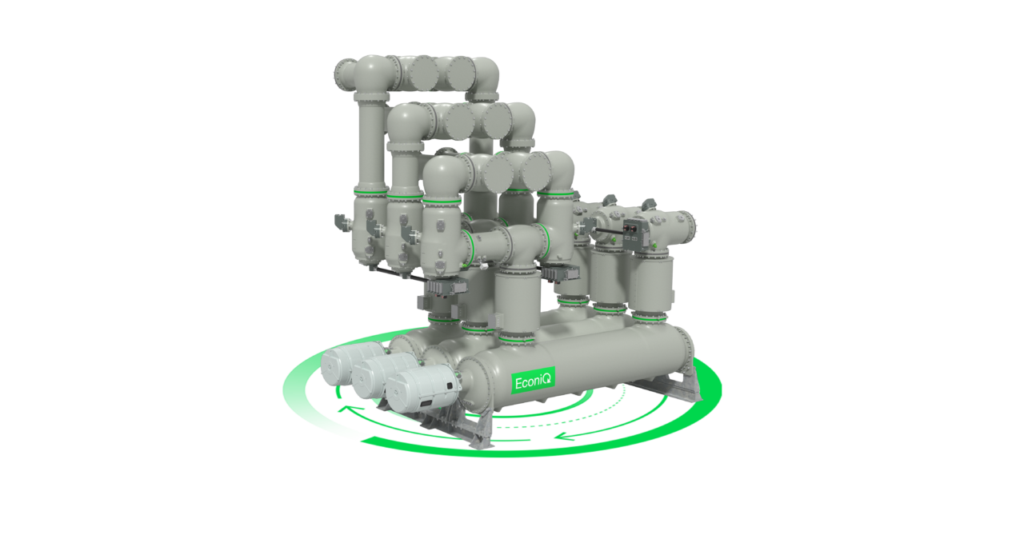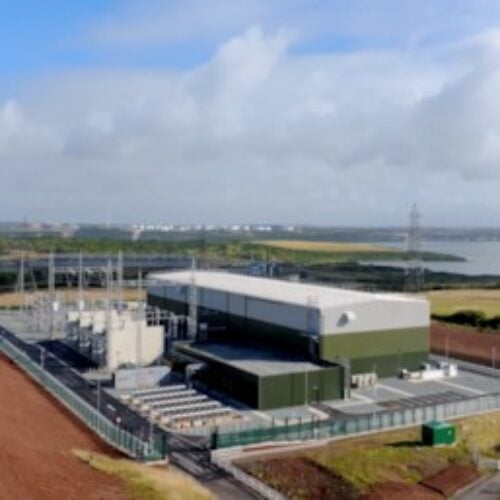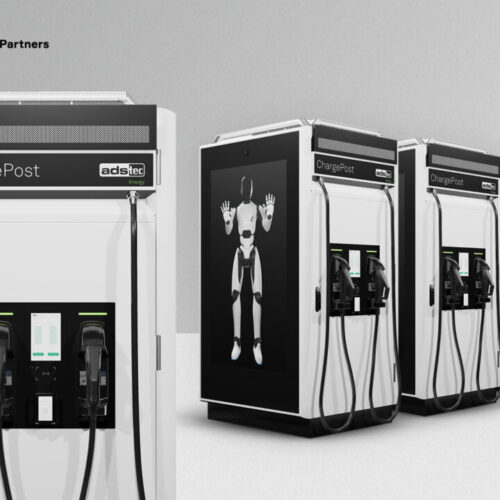Swiss-headquartered Hitachi Energy has signed a memorandum of understanding (MOU) with SP Energy Networks to provide lowered carbon switchgear technology.
The technology will be free from the material sulphur hexafluoride (SF6). SF6 is a highly efficient electrical insulator and can be used for various applications, such as medium- and high-voltage switchgear and circuit breakers. However, it has a global warming potential that is 24,300 times greater than carbon dioxide. As such, reducing its usage could be hugely beneficial to the overall decarbonisation of grid infrastructure.
The MOU would see Hitachi supply the SF6-free solutions via its Econiq portfolio, which aims to provide companies with eco-efficient technology to support the decarbonisation of energy equipment and infrastructure.
The first installations of the EconiQ 420kV GIS (pictured) will take place in two new planned substations owned by SP Energy Network. These will help provide low-emission transmission infrastructure in Scotland, in accordance with the country’s legislated target to reach net zero emissions by 2045.
Pearse Murray, transmission director for SP Energy Networks, outlined that developing a decarbonised power grid will be critical for delivering a future power system.
“This agreement marks a milestone moment for SP Energy Networks as we continue to invest to upgrade our network while reducing our greenhouse gas emissions. I have no doubt this partnership will help us deliver a cleaner, greener and better future, quicker,” Murray added.
At the end of last year, SP Energy Networks announced its intention to invest £10.6 billion in infrastructure upgrades across its network covering the next price control period from 2026 to 2031.
It said it will deliver new and upgraded transmission infrastructure in central and southern Scotland, including 12 new transmission substations, 450km of upgraded existing circuits, 87km of upgraded overhead lines and 35km of underground cables.
The plan, which seeks to increase capacity on Great Britain’s transmission grid, also outlined investment SPEN said will “improve network resilience, maintain existing assets and help connect up to 19GW of new clean, green power to the grid.”
Efforts to reduce SF6 usage
Over the years, several organisations in the UK have looked to reduce the use of SF6 in numerous projects, transmission upgrades, and research facilities.
For instance, at the start of 2023, National Grid confirmed it would use Hitachi’s technology to reduce the use of SF6 across its £1 billion London Power Tunnels (LPT) project.
The LPT project aims to rewire South London via deep underground tunnels to provide what it calls “safe and reliable” electricity supplies. The tunnels, which are three metres in diameter, are being constructed deep below the road network between Wimbledon and Crayford. They will carry high-voltage electricity cables.
Hitachi delivered 400kV gas-insulated switchgear and gas-insulated lines, containing no SF6 from its Econiq portfolio, to reduce the emissions of the Bengeworth Road substation.
In early 2024, the University of Aberdeen’s high-voltage DC (HVDC) research centre joined a European initiative to reduce the use of SF6 technology.






